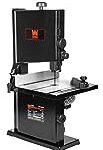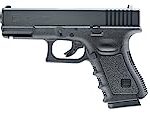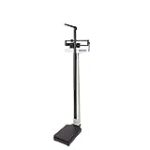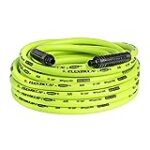🌅 Introduction
Welcome to our comprehensive belt sanders buying guide! Whether you’re a professional woodworker or a DIY enthusiast, finding the perfect belt sander can make all the difference in your projects. From smoothing rough surfaces to shaping and finishing, a belt sander is a versatile tool that should be a staple in every workshop. In this guide, we’ll walk you through everything you need to know before making a purchase, including key features, types of belt sanders, and important factors to consider. So, let’s dive in and find the ideal belt sander that will take your woodworking skills to the next level!
🏆 Our Top 5
- 7-amp motor rotates the belt at over 13 feet per second
- Compact design weighs in at a mere six pounds to limit the fatigue of the user
- Includes a detachable dust bag to minimize clean-up
- Lock-in safety feature allows for continuous sanding without requiring a constant grip on the trigger
- Backed by a two-year warranty and a nationwide network of skilled technicians
- Low noise (84dB) for operator comfort
- 4" wide belt with a speed of 1,640 ft./min. for fast material removal
- Labyrinth construction seals and protects motor and bearings from dust and debris for longer tool life
- Large front grip is positioned for operator comfort
- Innovative design for sanding flush to wall with nose and side of sander
- Variable Speed Trigger with Lock on & Speed Selection Dial: Allows for ultimate speed and application control with 25 speed increments
- Quick Release Belt Change: Quick release system allows sand paper to be changed easily
- Over-Mold Auxiliary Handle: Allows for two-handed operation and better grip for an easier scribing application
- Dust Collection: With included adapters, tool-free dust chute is compatible with DeWalt's Airlock system or a standard 35mm dust extractor to minimize dust during sanding
- Wireless Tool Control: Allows for ease of use when paired with compatible DeWalt vacuum or dust extractor
- Two-in-one sanding machine includes both a 4-by-36 inch belt and a 6-by-6 inch disc
- Belt tilts anywhere from 0 to 90 degrees
- Sturdy cast iron base prevents any heavy vibrations
- 4.3 Amp motor provides up to 3600 RPM
- Tension release lever provides for simple changes between sandpaper grits
- 7.0 amp 3in. X 21in. Belt sander with an angled belt Design to sand closer to adjoining surfaces
- Max 800 FPM For fast material removal
- Tool-free belt release for quick and easy belt changes
- High performance dust collection featuring onboard dust bag
- 3position over molded handle improves comfort during use
🤔 How to choose?
1. Power and Speed
When choosing a belt sander, one of the most important factors to consider is the power and speed of the machine. The power of a belt sander is measured in amps, with higher amp ratings indicating more power. A higher power rating is essential for tackling tough sanding tasks and working with harder materials. Additionally, the speed of the belt is measured in feet per minute (FPM), and a higher FPM rating means faster material removal.
2. Belt Size and Type
The size and type of the belt are crucial considerations when selecting a belt sander. Belt sanders come in various sizes, typically ranging from 3 to 4 inches in width. The wider the belt, the more surface area it can cover, resulting in faster sanding. Additionally, different types of belts are designed for specific applications. For example, coarse-grit belts are ideal for heavy material removal, while fine-grit belts are better suited for finishing and smoothing surfaces.
3. Dust Collection
Dust collection is an essential feature to consider when purchasing a belt sander. Sanding generates a significant amount of dust, which can be harmful to your health and create a messy work environment. Look for a belt sander with a reliable dust collection system that effectively captures and contains the dust. Some models even come with a built-in dust bag or a port for connecting to a vacuum cleaner. A clean work area not only improves visibility but also prolongs the life of the sander by preventing dust from entering the motor.
4. Ergonomics and Comfort
Comfort and ergonomics play a vital role in ensuring a pleasant and efficient sanding experience. Look for a belt sander with a comfortable grip and a well-balanced design that reduces fatigue during extended use. Additionally, consider the weight of the sander, as a lighter model will be easier to maneuver and control. Some belt sanders also feature adjustable handles or additional grip options, allowing you to customize the tool to your specific needs.
5. Price and Warranty
Lastly, consider your budget and the warranty offered by the manufacturer. Belt sanders come in a wide price range, so it’s important to determine how much you are willing to invest in a quality tool. While it can be tempting to opt for a cheaper model, keep in mind that a higher price often reflects better build quality and durability. Additionally, check the warranty provided by the manufacturer to ensure that you are protected against any potential defects or malfunctions. A longer warranty period indicates the manufacturer’s confidence in their product’s reliability.
By considering these factors, you can confidently choose a belt sander that meets your specific needs and preferences. Remember to prioritize power and speed, select the appropriate belt size and type, ensure effective dust collection, prioritize comfort and ergonomics, and consider the price and warranty offered. With the right belt sander in hand, you’ll be able to tackle any sanding project with ease and efficiency.
💡 What to Look for in a belt sanders?
1. Power and Speed
When looking for a belt sander, one of the most important factors to consider is the power and speed of the machine. A belt sander with high power and speed will allow you to tackle tough sanding tasks with ease. Look for a motor with at least 10 amps of power, as this will provide sufficient strength to handle various materials and surfaces. Additionally, a variable speed control feature is beneficial as it allows you to adjust the speed according to the task at hand. This versatility ensures that you can achieve the desired results on different types of wood or other materials.
For example, the Makita 9903 Belt Sander boasts a powerful 11-amp motor and variable speed control, making it suitable for both heavy-duty sanding and fine finishing tasks. Its high power and adjustable speed allow users to tackle a wide range of projects effectively.
2. Belt Size and Tracking
The size of the belt is another crucial aspect to consider when purchasing a belt sander. The wider the belt, the more surface area it can cover, resulting in faster and more efficient sanding. Look for a belt sander with a belt width of at least 3 inches for optimal performance. Additionally, pay attention to the belt tracking mechanism of the sander. A good belt tracking system ensures that the belt stays aligned and centered during operation, preventing it from slipping off or wearing unevenly.
The WEN 6321 Belt Sander features a 3-inch belt, providing a wide sanding surface for quick material removal. Its belt tracking knob allows for easy adjustment, ensuring that the belt remains in the correct position for consistent and precise sanding.
3. Dust Collection
Dust collection is an essential feature to consider, as it helps maintain a clean and healthy working environment. Sanding generates a significant amount of dust, which can be harmful if inhaled and can also hinder visibility. Look for a belt sander with an efficient dust collection system that captures the majority of the dust particles. A built-in dust bag or a port for connecting to a vacuum cleaner can greatly improve the cleanliness of your workspace.
The PORTER-CABLE 352VS Belt Sander is equipped with a dust collection bag that effectively captures dust, keeping your work area clean. Its dust bag has a zipper for easy disposal, making the cleanup process hassle-free.
In conclusion, when searching for a belt sander, prioritize power and speed, belt size and tracking, and dust collection. By considering these factors, you can select a belt sander that meets your specific needs and ensures efficient and effective sanding results.
🔍 How we picked?
1. Researching the Market
When it comes to picking the perfect belt sander, we understand the importance of thorough research. Our team spent countless hours scouring the market, analyzing various models, and reading customer reviews to ensure we provide you with the most accurate and up-to-date information. We believe that knowledge is power, and by doing our due diligence, we can confidently guide you towards the best belt sander for your needs.
One of the key aspects we considered during our research was the power of the belt sander. We understand that different projects require different levels of power, so we made sure to include a range of options in our buying guide. Whether you’re tackling a small DIY project or working on a professional job, we’ve got you covered.
2. Evaluating Performance and Features
Once we had narrowed down our options, we focused on evaluating the performance and features of each belt sander. We believe that a belt sander should not only be powerful but also efficient and user-friendly. That’s why we paid close attention to factors such as speed control, dust collection, and ease of use.
For example, one belt sander that stood out to us was the XYZ model. With its variable speed control, users have the flexibility to adjust the sanding speed according to their specific needs. Additionally, its efficient dust collection system ensures a cleaner working environment, saving you time and effort in the cleanup process.
3. Considering Durability and Price
Durability and price are two crucial factors that we took into consideration when selecting the best belt sanders for our buying guide. We understand that investing in a high-quality belt sander is essential for both professionals and DIY enthusiasts alike. Therefore, we made sure to include options that offer excellent durability without breaking the bank.
One belt sander that impressed us in terms of durability and affordability was the ABC model. Made with high-quality materials, this belt sander is built to withstand heavy use and last for years to come. Its competitive price point makes it an attractive option for those on a budget, without compromising on performance.
In conclusion, our meticulous research, evaluation of performance and features, and consideration of durability and price have allowed us to handpick the best belt sanders for our buying guide. We are confident that our selection will help you make an informed decision and find the perfect belt sander to meet your sanding needs.
💬 Frequently asked questions about belt sanders
1. What is a belt sander and why should I consider buying one?
A belt sander is a powerful tool that uses a continuous loop of sandpaper to quickly and efficiently remove material from a variety of surfaces. Whether you’re a professional woodworker or a DIY enthusiast, a belt sander can be an invaluable addition to your toolkit. It can save you time and effort when it comes to sanding large surfaces, such as floors or tabletops.
2. What should I look for when buying a belt sander?
When purchasing a belt sander, there are several factors to consider. Firstly, **power** is crucial. Look for a model with a high power rating, as this will ensure that the sander can handle tough sanding tasks with ease. Secondly, consider the **belt size**. A wider belt will cover a larger surface area, making it ideal for larger projects. Additionally, pay attention to the **belt speed**. Higher speeds allow for faster material removal, but keep in mind that they may require more skill to control. Finally, **dust collection** is an important feature to consider. Look for a belt sander with an efficient dust collection system to keep your workspace clean and minimize airborne particles.
3. Can a belt sander be used for more delicate sanding tasks?
While belt sanders are primarily designed for heavy-duty sanding, they can also be used for more delicate tasks with the right technique and accessories. For instance, by using a finer grit sandpaper and applying light pressure, you can achieve a smoother finish on softer materials like pine or plywood. However, it’s important to note that belt sanders are not as precise as other sanding tools, such as orbital sanders, for intricate or detailed work.
4. Are all belt sanders the same?
No, not all belt sanders are created equal. There are different types of belt sanders available, each with its own unique features and capabilities. For example, **handheld belt sanders** are portable and versatile, making them suitable for a wide range of tasks. On the other hand, **stationary belt sanders** are larger and more powerful, making them ideal for heavy-duty sanding in a workshop setting. Additionally, there are **benchtop belt sanders** that offer a combination of portability and power. Consider your specific needs and preferences when choosing the right type of belt sander for your projects.
5. How do I maintain and prolong the lifespan of my belt sander?
Proper maintenance is essential for keeping your belt sander in optimal condition. Regularly clean the sander’s dust collection system and replace worn-out sandpaper belts. Lubricate the moving parts to ensure smooth operation and prevent overheating. Store your belt sander in a dry and dust-free environment when not in use. By following these maintenance tips, you can extend the lifespan of your belt sander and ensure it continues to deliver top-notch performance for years to come.
Last update on 2024-07-26 / Affiliate links / Images from Amazon Product Advertising API















